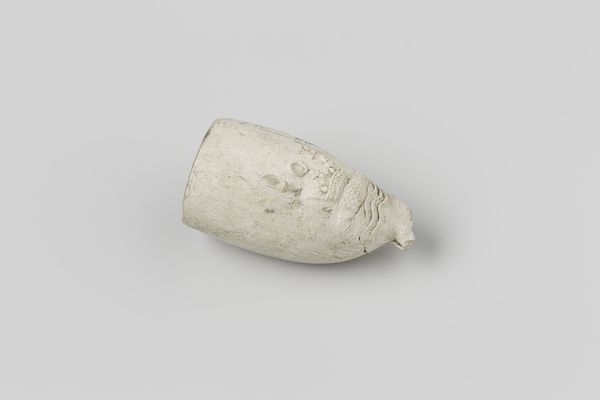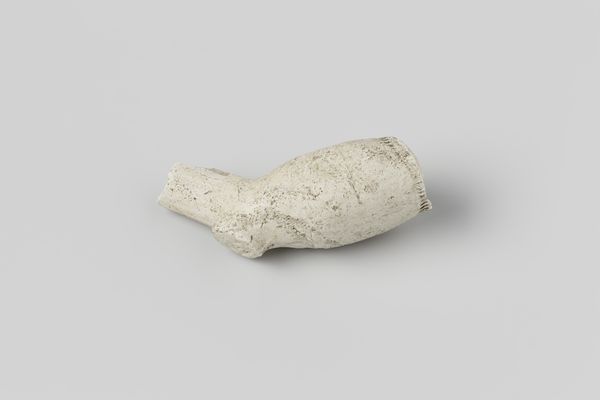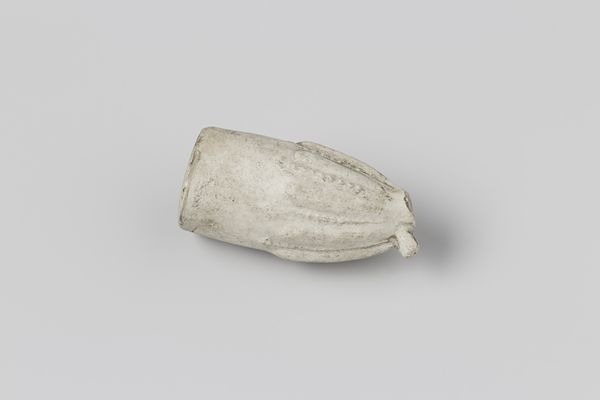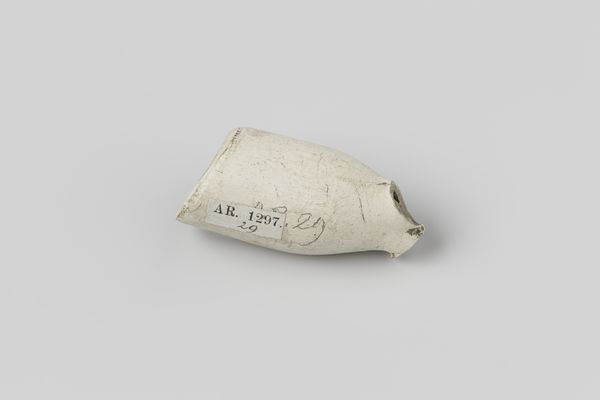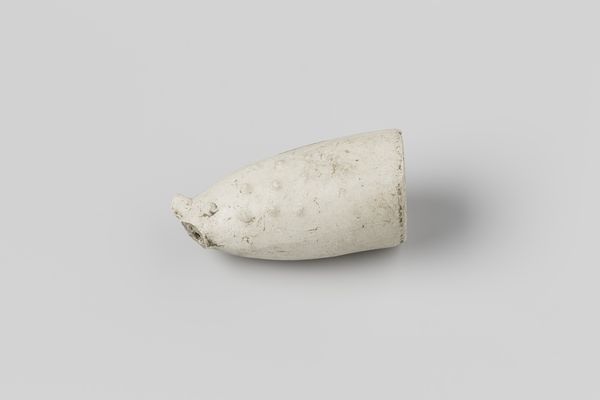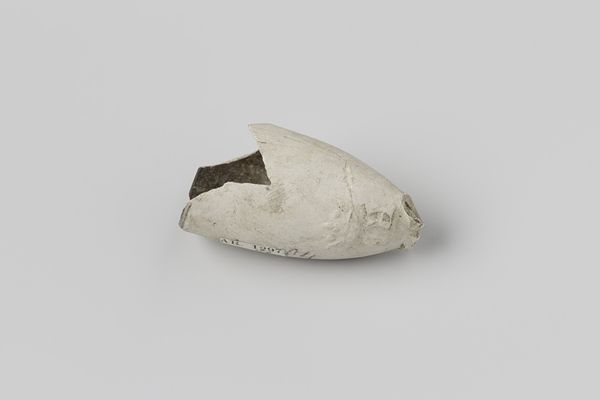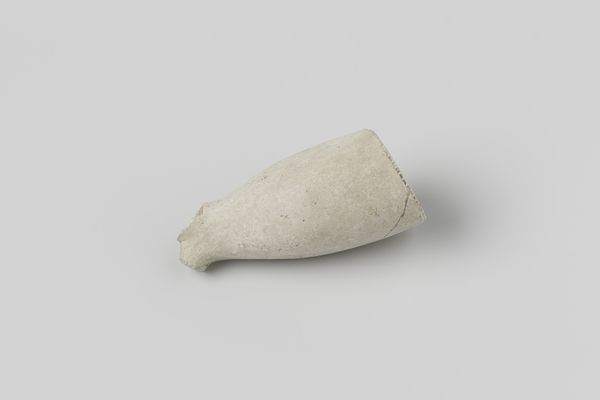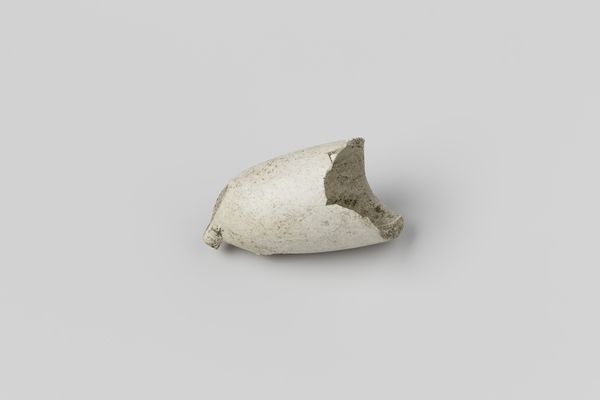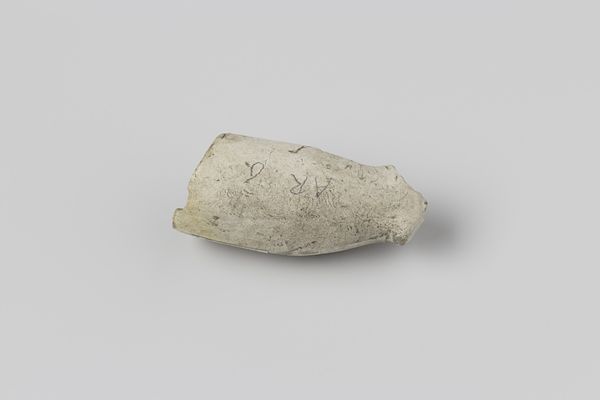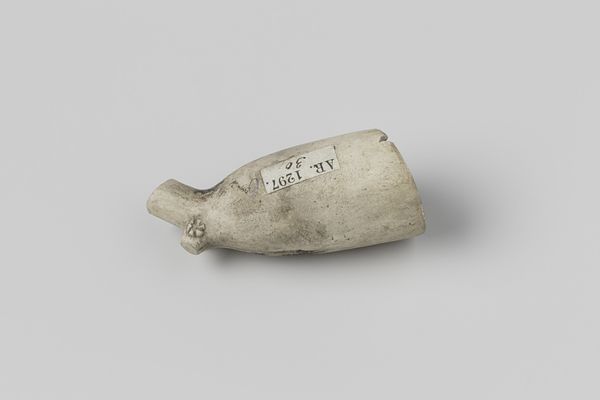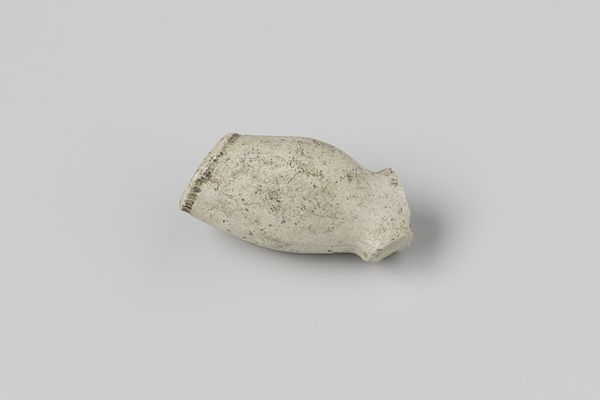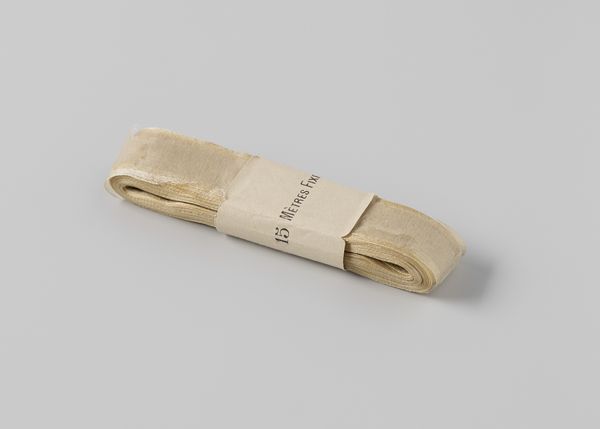
ceramic, earthenware
#
ceramic
#
earthenware
#
rococo
Dimensions: length 4.4 cm, width 2.2 cm
Copyright: Rijks Museum: Open Domain
Editor: This object, called "Pijpenkop," or "Pipe Head," was crafted by Coenraad Willemsz Murk sometime between 1750 and 1780. It’s made of earthenware and is in the Rococo style. There is a sense of antiquity with this small and modest object. I notice a label that gives it the appearance of found object in a cabinet of curiosity. How should we read such a form today? Curator: Well, a pipe head, seemingly unassuming, holds layers of meaning tied to ritual, trade, and social habits. Its presence speaks volumes about leisure, social bonding, and perhaps even contemplation. Can you see the trace of a story there? Editor: Yes, there’s something so ordinary about it, and yet you suggest that ordinary objects often have a potent symbolic function? Curator: Precisely! Think of tobacco’s journey to Europe and the culture that bloomed around it. This pipe isn’t just for smoking; it signifies status, belonging, and shared experiences. This era saw the bloom of Rococo, which promoted themes of leisure and luxury; what might the act of smoking have symbolized? Editor: Perhaps a way to meditate? The way one's attention and intention are drawn to the moment seems connected to that? What would you want people to take away from an encounter with this image? Curator: I want them to realize that every artifact is a repository of cultural memory. Symbols evolve, meanings shift, but the underlying human need for connection and expression remains constant. What do you think about the experience now? Editor: I see this ‘Pipe Head’ with new eyes. I'm drawn to what this image communicates beyond its material form. Curator: Me too, recognizing ourselves mirrored across time and culture.
Comments
No comments
Be the first to comment and join the conversation on the ultimate creative platform.
